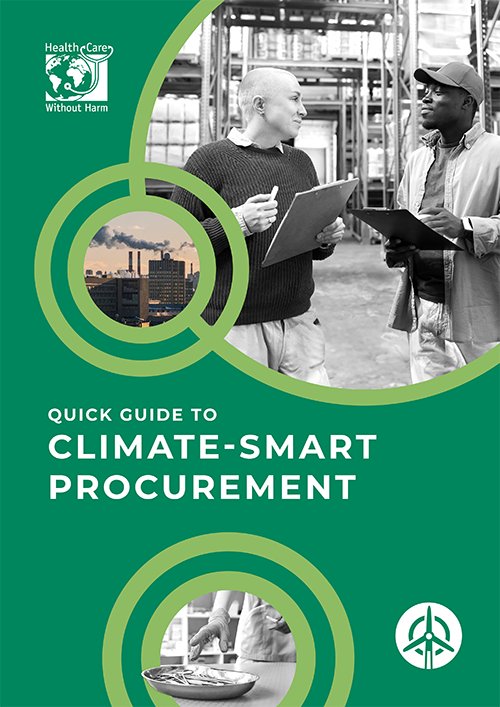Our new publication, Quick guide to climate-smart procurement, supports anyone working in healthcare to reduce the sector’s carbon footprint through sustainable procurement practices. Developed using case studies from the 2023 European Healthcare Climate Summit, the guide shares three best practice examples from across Europe that target emissions from hospital buildings, pharmaceuticals, and single-use devices.
Alongside the case studies, the guide also presents recommendations to help hospitals and health systems purchase lower carbon goods and services, cutting key sources of emissions.

Leveraging healthcare’s purchasing power
The European healthcare sector, with its 12,990 hospitals and 2.8 million hospital beds, is a significant consumer of energy, water, building materials, pharmaceuticals, and medical devices. Emissions from the procurement of these goods and services make up 71% of the sector’s total carbon footprint.
However, the sheer size of the sector - representing over 10% of European GDP - presents a unique opportunity to address these emissions and drive positive change. As major purchasers of goods and services, European healthcare facilities are well-placed to accelerate the transition to a low-carbon economy through procurement and safeguard both human and environmental health in the process.
Climate-smart procurement
Climate-smart procurement represents a significant opportunity for organisations to transition towards a net zero carbon and climate-resilient healthcare sector, while also gaining efficiency and saving time and money.
This guide supports procurers, healthcare professionals, and senior decision-makers in healthcare facilities to seize this opportunity and create change by adopting climate-smart procurement strategies and practices.